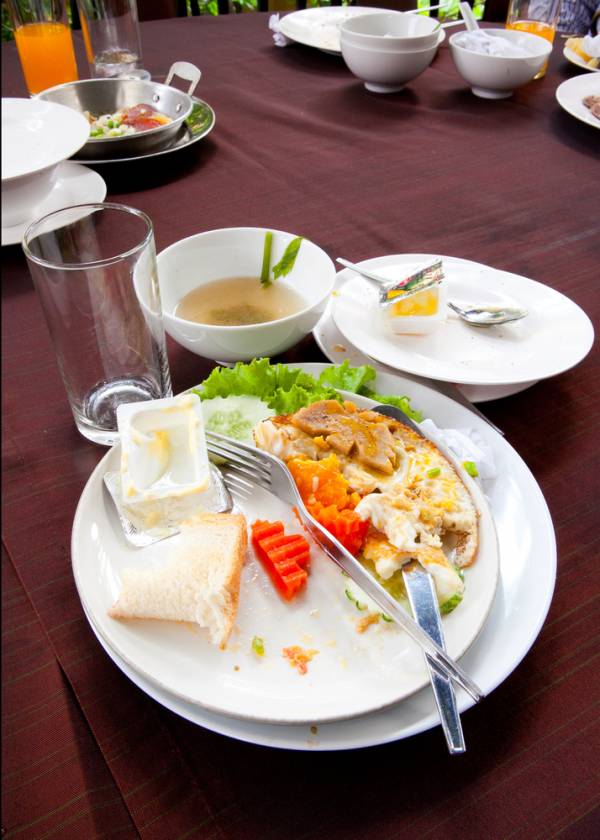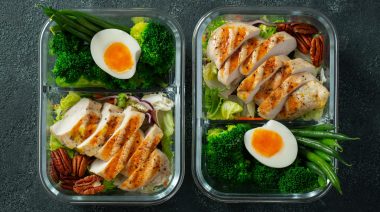Before I get into this topic, chew on this (pun intended): we live in a society where calories are EVERYWHERE! Think about it.
Before I get into this topic, chew on this (pun intended): we live in a society where calories are EVERYWHERE! Think about it.
- Fast-food joints within walking distance from home (but we drive there).
- Vending machines at your workplace loaded with sugar, fat, and salt.
- Processed foods are aplenty throughout the supermarket. And they’re inexpensive, so load up.
- Go to Hometown Buffet and pay $12.95 for a license to take home as many calories as you can shove down the old pie hole.
Most of the time when I offer advice to someone seeking to “lose weight and firm up” it all goes back to their food intake habits, as opposed to a specific exercise regimen. Constructing a sensible exercise regime is very simple. Altering a person’s food intake habits is a tough nut to crack.
If you consume a plethora of low-nutritional value calories – that is, refined carbs, full-calorie sodas, high fructose-laden foods, and other junk food – you are most likely taking in more calories than you are burning off. The end result of this behavior is the accumulation of excess adipose body fat. Remember, everything you eat has to go somewhere. Calories just don’t “disappear into thin air.” All calories count, whether liquid or solid.
Let’s start the backpedalling process of calorie hoarding with the simple concept of dishware portion sizes. After all, eating fewer calories (smaller portion sizes, all other factors being equal) is the bottom line in the attempt to lose body fat, so let’s try to “make the plate” workable.
A study on portion size in Appetite (Australia) investigated the reality of dishware size and portion size and determined that portion size has increased considerably over the past few decades. One influencing factor was dishware size. Using mathematical models researchers investigated how dish size affected the potential calories available in a single meal. Two types of plate filling – flat shaped and conical shaped – were analyzed for a range of plate sizes and calorie densities, then compared to recommended daily calorie requirements from Australian guidelines. Bowl filling was also analyzed.
The results showed a small increase in dishware size can lead to a substantial increase in calories available to be consumed, particularly if food is calorie dense. This reinforces the need to consider dishware size when developing strategies to prevent over-consumption.
This theoretical analysis of the relationship between dishware size and available calories demonstrates the consequence of even a small increase in the size of a plate or bowl. The results suggest when larger plate sizes are used it is even more important to serve low calorie-dense foods, or at least a mixture of low and high calorie-dense foods to limit overall food intake.
Total calories available in any meal is influenced by a combination of dishware choice (plate or bowl), dishware size, how the dishware is filled, and food calorie density. Increased dishware size – or multiple servings – can be lessened partly by reducing the calorie density of foods that are served. Conversely, smaller dishware minimizes the effect of filling technique (flat or conical) on portion size.
There were also limitations in this study. Plate and bowl filling, both in terms of shape and density will differ – often considerably – between individuals and foods. Calorie density will inevitably vary from meal to meal, and individuals have unique calorie requirements. To account for these variations, conservative assumptions were adopted and a number of conditions analyzed.

Despite these limitations, the mathematical relationship is significant – a small increase in the size of dishware potentially results in a substantial increase in calories available to consume. In absolute terms, the difference is worsened for bowls or if the food is high in calorie density. The difference in practical terms is more complex and related to individual differences, available foods and possibly time required to reach satiety, which is a complex physiological and psychological relationship between food quantity, calorie density, food quality, eating time, and environmental stimuli.
The results of this study suggest the need not only to offer low calorie-dense foods – like vegetables – as part of every meal, but to serve high calorie-dense foods on the smallest plates possible and avoid using bowls. Low calorie-dense foods served on small dishware, irrespective of filling technique (flat, conical or other), minimizes the calories available for consumption at a meal provided only one helping is eaten.
So, what can we take from this study?
- Small bowl or plate + low calorie-dense food + one serving = lower relative calorie intake.
- Small bowl or plate + high calorie-dense food + multiple servings = higher relative calorie intake.
- Large bowl or plate + low calorie-dense food + one serving = lower relative calorie intake.
- Large bowl or plate + high calorie-dense food + multiple servings = higher relative calorie intake.
Appropriate calorie intake still comes down to discipline. If attempting to decrease total calorie intake, use small dishware, consume low calorie-dense foods, and limit number of servings.






